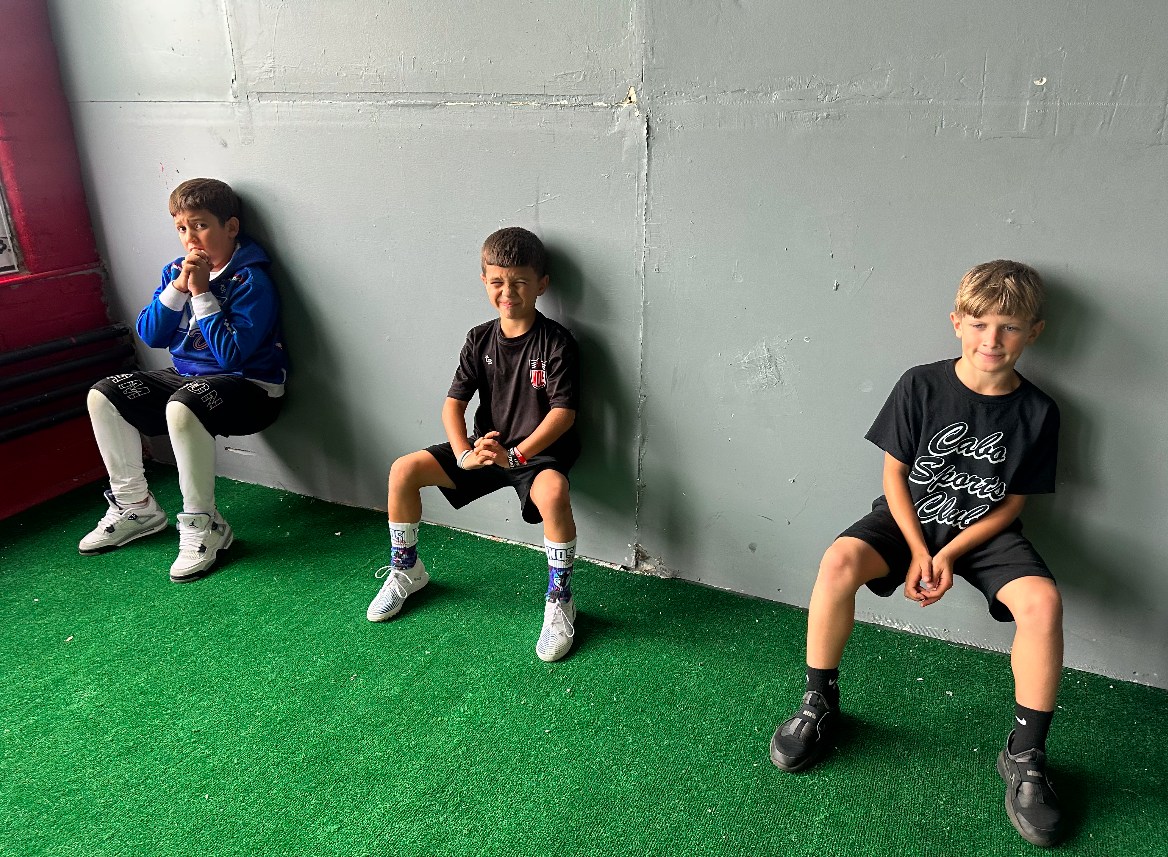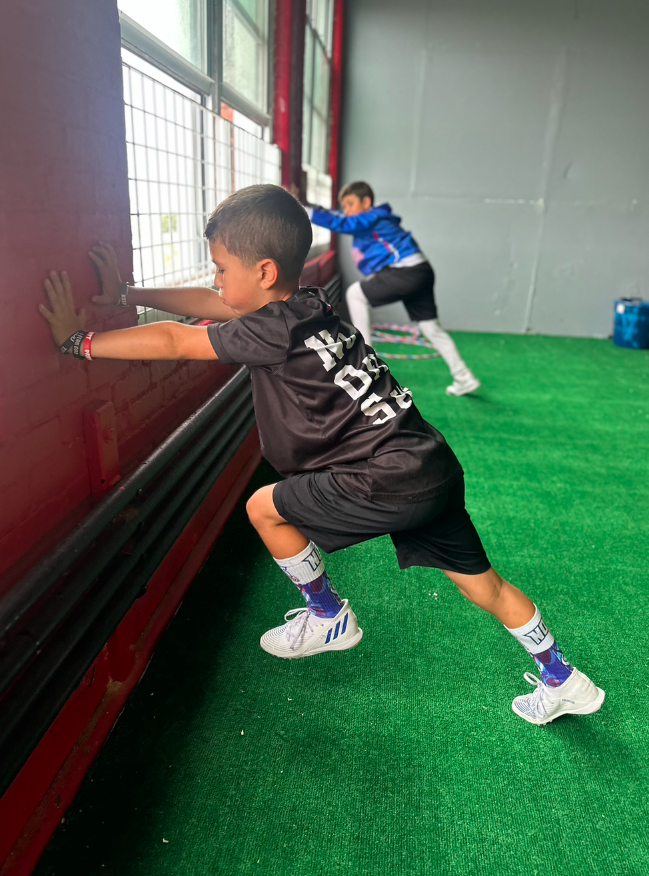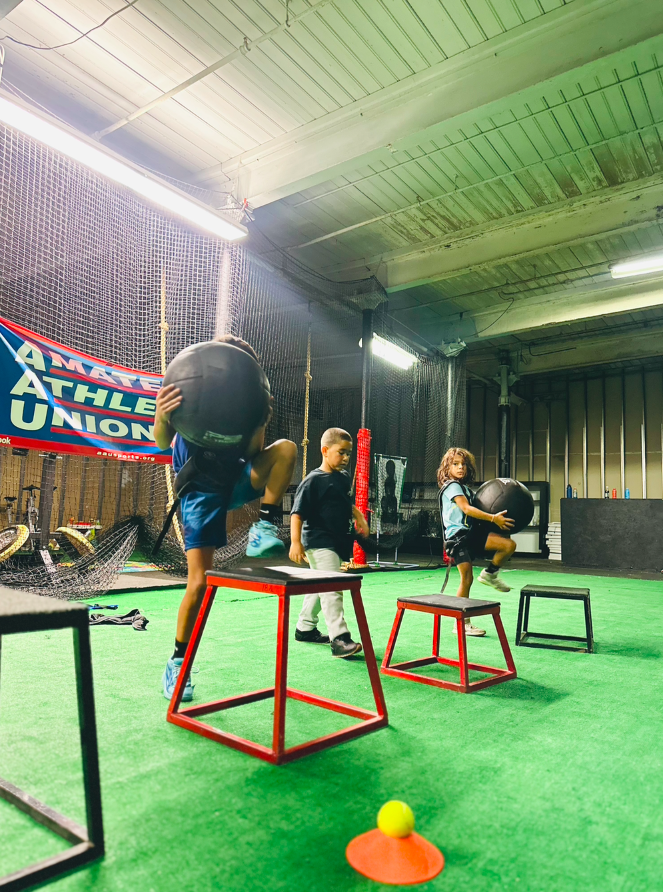
Building Stronger Athletes
TRAINING FOR ATHLETES OF ALL SPORTS
WHO WE ARE & WHAT WE DO
We Train Different. This is not your average gym.
This is a selective, invitation-only, process.
Strength & conditioning training is for Middle School & High School Divisions, only the dedicated are selected and invited to join our program. If selected, the expectation is year-round training at the gym until the athlete graduates high school. For our Youth Division, we accept all athletes that demonstrate they want to be great.

The Process
-
I will speak directly with athletes and parents to understand their long-term goals and answer any questions you may have.
-
Each potential athlete is invited to the gym for a performance assessment to identify strengths and weaknesses to improve.
-
After we meet I ask athletes to meet privately with their parents/guardians before they give a verbal commitment to the program.
-
Once I hear from the athlete, a commitment to become one of our athletes is based on schedule availability.
How you do one thing,
is how you do everything.
Our training is adaptable for all, focusing on functionality and translates to all areas of life. This facility works with athletes of all backgrounds; football, basketball, baseball, hockey and more.

WHAT IS THE NOS METHODOLOGY?
Our methodology comes from the legendary Coach Al Mitchemm coaching tree. Al’s son, Coach Scott Mitchemm’s methodology takes into consideration six important principles, with an emphasis on physics.
-
The Conjugate Method is a percentage-based, wave periodization, multi-year strength training program designed in the 1960s by a team of Russian sports scientists. This method is based on constantly rotating special exercises that are close in nature. Every week, the weakest muscle groups are identified and then strengthened. First and foremost, it is essential to select exercises that address issues. A movement that builds up lagging muscle groups or special strength such as starting, eccentric, or acceleration strength. Many methods are combined and then rotated. Combining the speed and max effort days, four elements of strength are trained for sprinters.
Absolute Strength: The greatest measure of strength as it uses the most muscle units
Dynamic Strength: Submaximal weights at maximal velocity Explosive
Strength: Maximal speed in the shortest amount of time
Repeated Strength: Repeated and steady movement of weight for a time, not reps.
-
Newton's second law of motion states that the acceleration of a system is directly proportional to and in the same direction as the net external force acting on the system and inversely proportional to its mass. In other words, for an object to accelerate a force must be applied. Newton's third law simply states that for every action there is an equal and opposite reaction.
How does this apply to speed training? The amount of the force and the location where it is providing the push can change the speed and further accelerate forward. Put more simply, the more weight an athlete builds in parts of the body responsible for the acceleration, the faster they can propel themselves forward.
-
K.E. = 1/2 m v2 - or - Kinetic Energy equals half an object's mass times the velocity squared Kinetic energy is seen when the object is in motion. Energy is exerted on the object to make it move. The kinetic energy of the object is dependent on the mass of the object and the speed at which it moves. Kinetic energy is given by the formula.
Where: m is the mass of an object, v is the speed of an object. From this formula, we can observe that the kinetic energy of an object is directly proportional to the square of its speed. This means that the speed doubles and kinetic energy increases by a factor of four.
If the speed increases by threefold, the kinetic energy will increase by a factor of nine. Hence we can say that the kinetic energy of the object is dependent upon the square of the speed.
-
The force-velocity curve explains the relationship between how much force a muscle can produce and how fast it contracts.
A muscle produces its highest amounts of force at slow contraction velocities which means that it will also experience high levels of tension at these slow velocities. We use the force-velocity curve to our advantage, by mixing both lifting heavy weights at slow contraction velocities and lighter weights to capitalize on the mechanical tension experienced by the muscle.
-
The Law of Accommodation says that we need to use a different stimulus on a regular basis to achieve results. This means that using the same workout routine day in and day out will eventually not produce new results, or results will dramatically decrease or in the worst case, you may backslide.
To prevent accommodation, we change stances, bars, and various other parts of our structured routines every few weeks. Variety is the best way to combat this issue.
-
Accommodating Resistance refers to the use of chains or bands to develop maximal tension throughout the full range of motion, rather than at your weakest point.































